POLYMER PROCESSING Processing is the source of

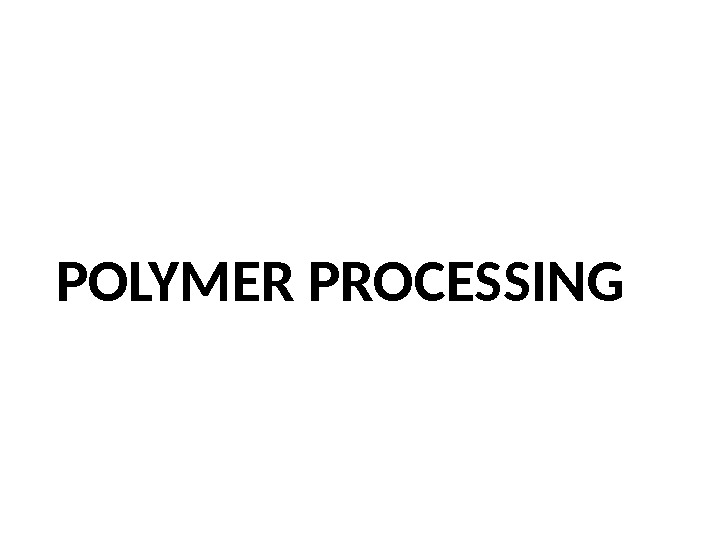
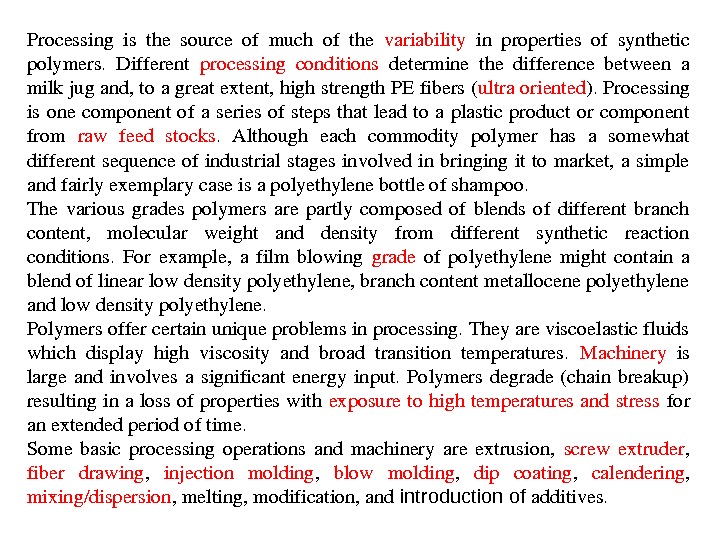
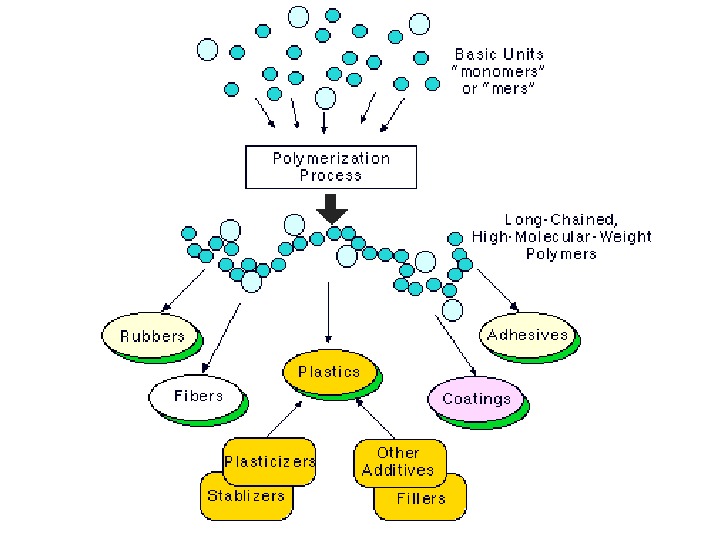
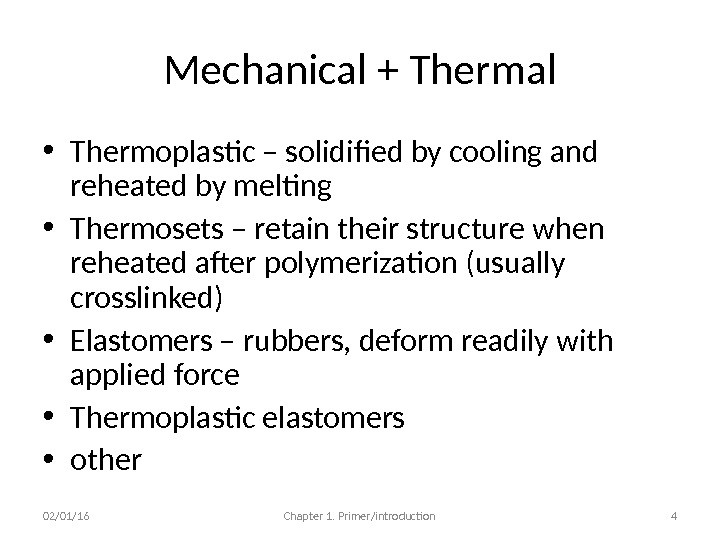
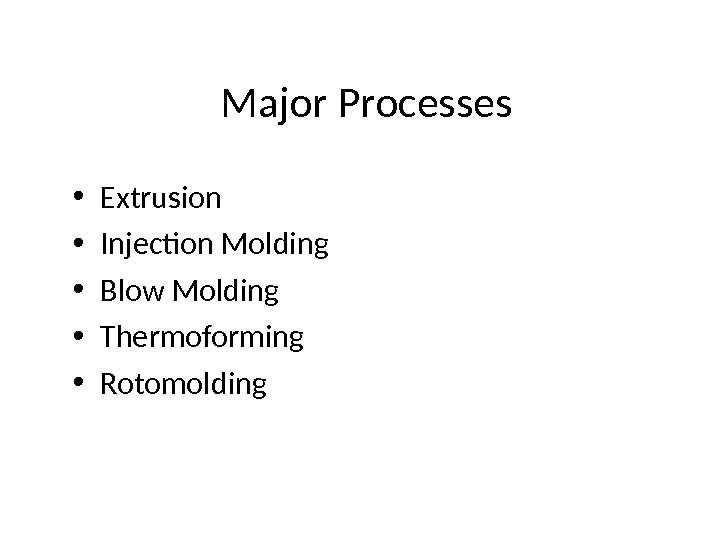
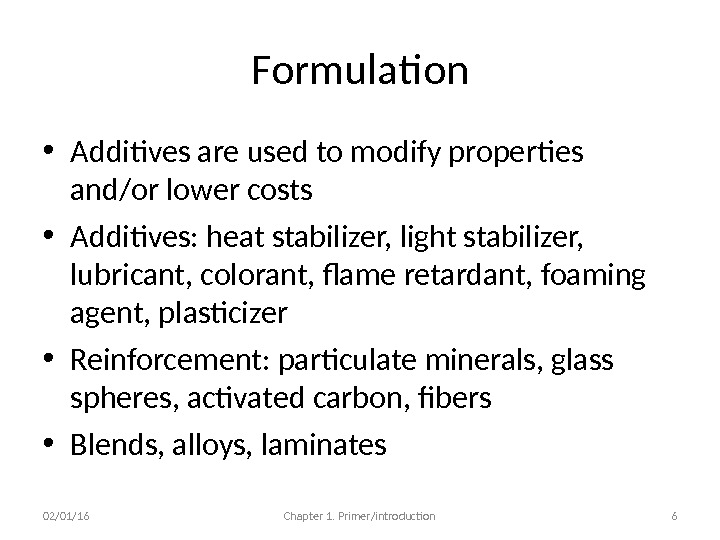
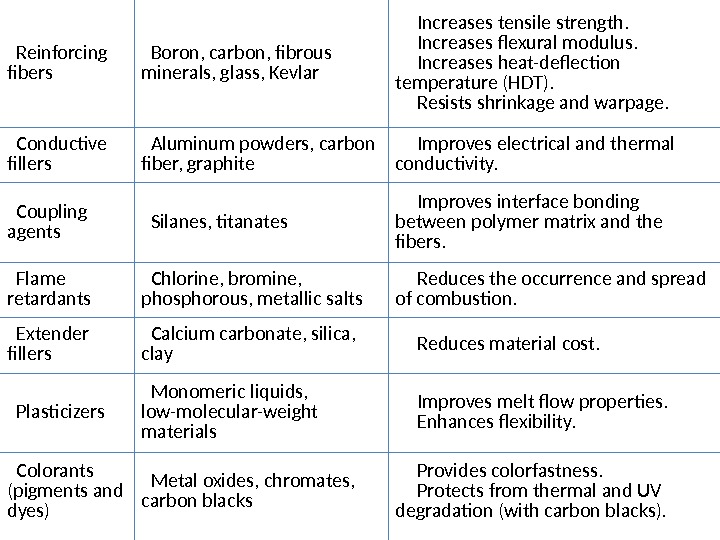
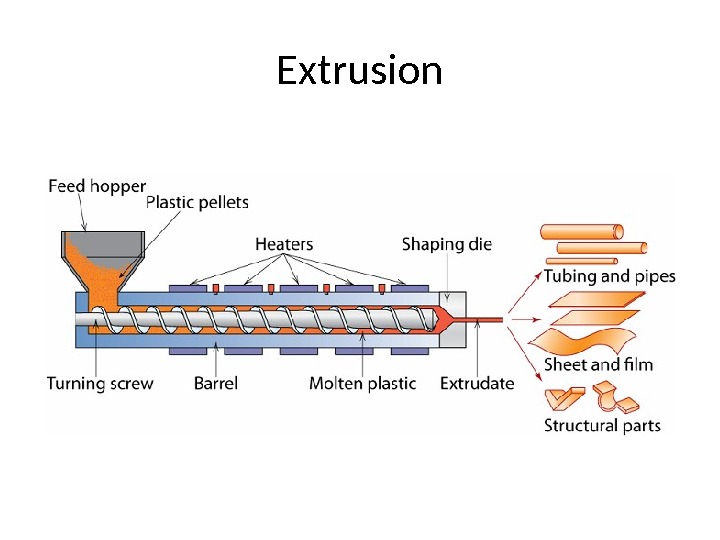

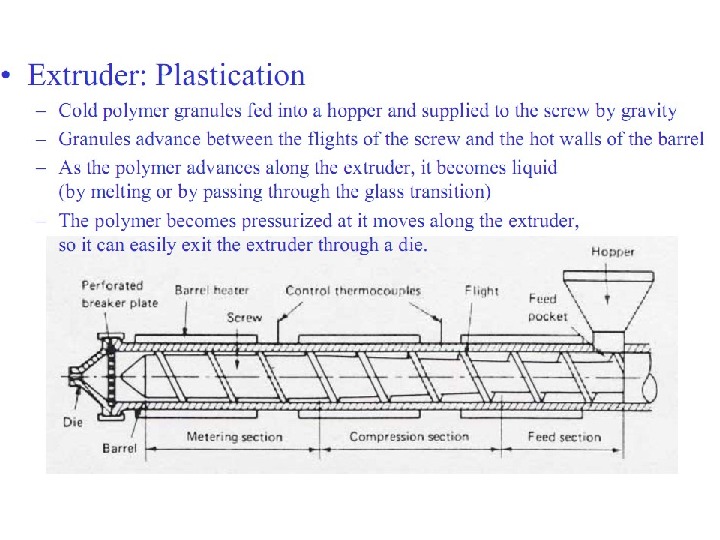
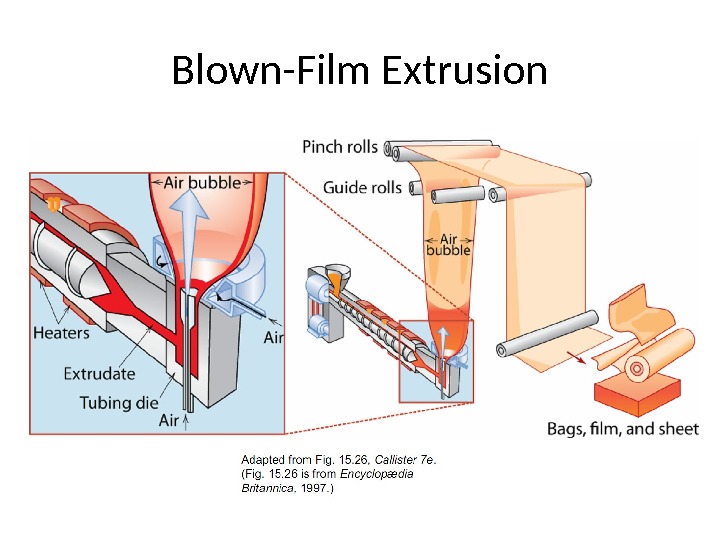
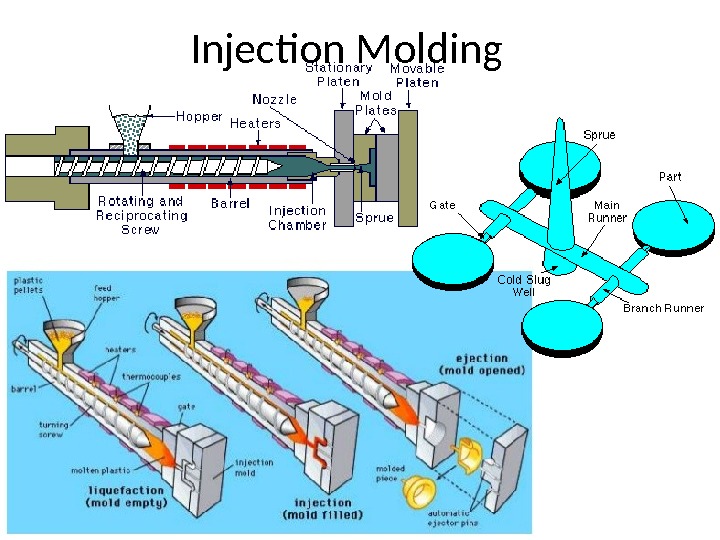
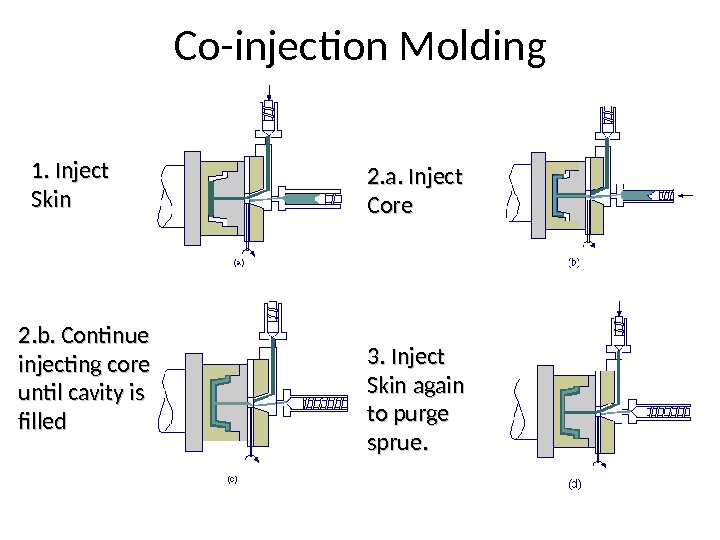
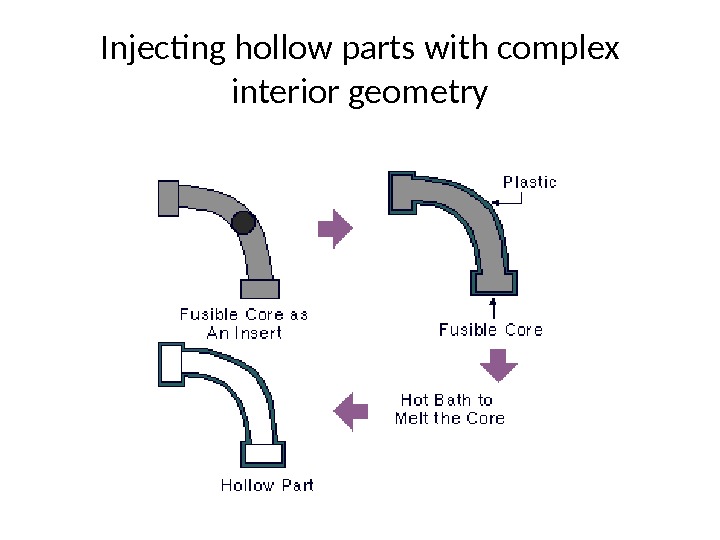

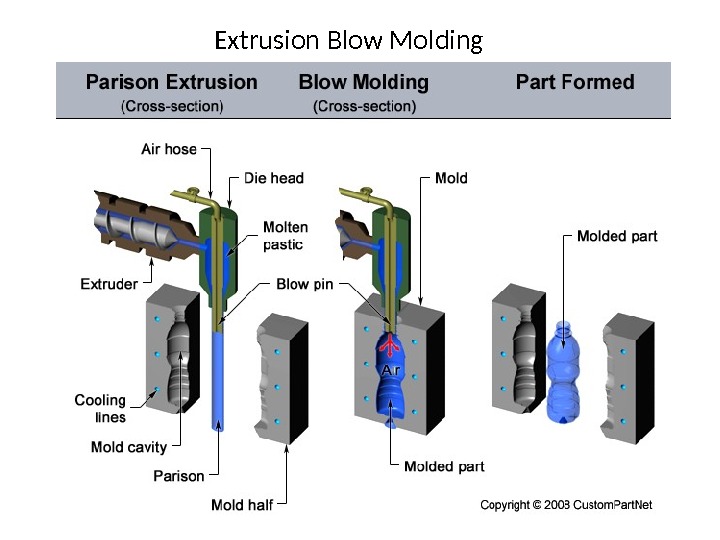
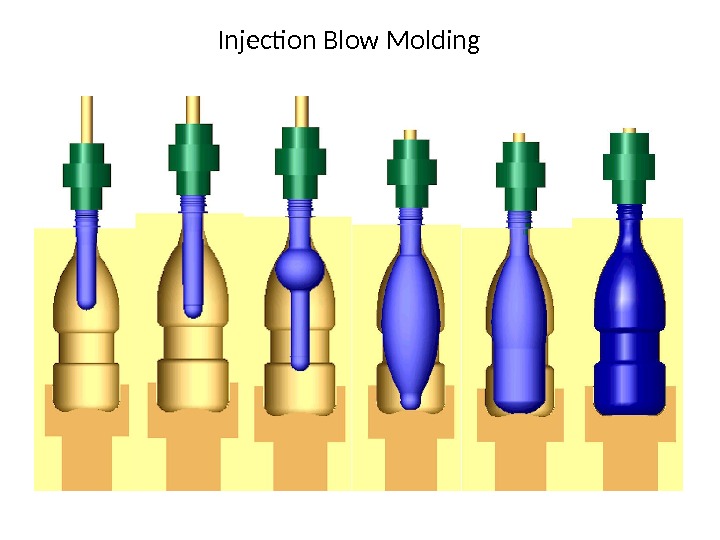

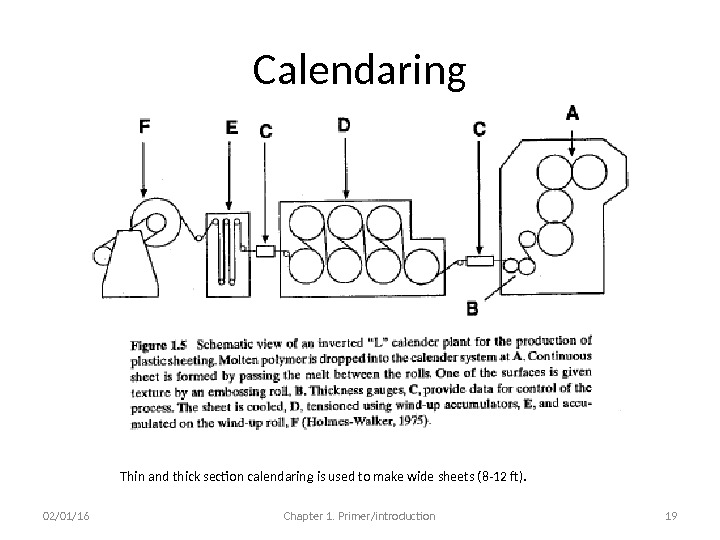
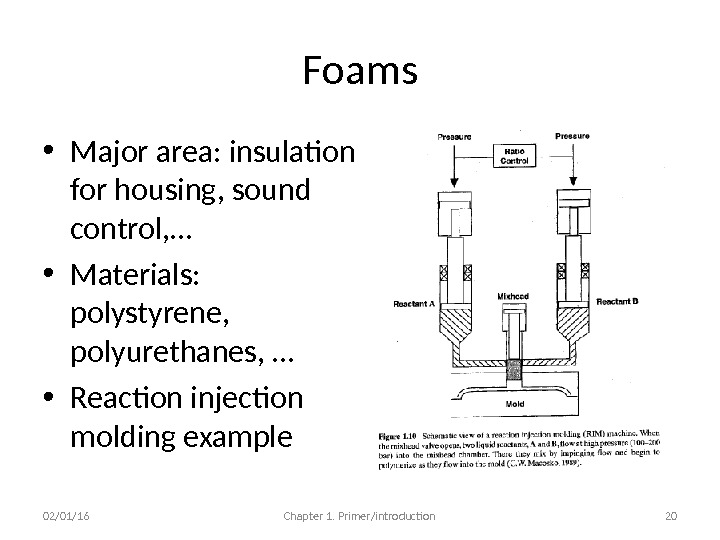
- Размер: 1.7 Mегабайта
- Количество слайдов: 20
Описание презентации POLYMER PROCESSING Processing is the source of по слайдам
 POLYMER PROCESSING
POLYMER PROCESSING
 Processing is the source of much of the variability in properties of synthetic polymers. Different processing conditions determine the difference between a milkjugand, toagreatextent, highstrength. PEfibers( ultraoriented ). Processing is one component of a series of steps that lead to a plastic product or component from raw feed stocks. Although each commodity polymer has a somewhat different sequence of industrial stages involved in bringing it to market, a simple andfairlyexemplarycaseisapolyethylenebottleofshampoo. The various grades polymers are partly composed of blends of different branch content, molecular weight and density from different synthetic reaction conditions. For example, a film blowing grade of polyethylene might contain a blendoflinearlowdensitypolyethylene, branchcontentmetallocenepolyethylene andlowdensitypolyethylene. Polymersoffercertainuniqueproblemsinprocessing. Theyareviscoelasticfluids which display high viscosity and broad transition temperatures. Machinery is large and involves a significant energy input. Polymers degrade (chain breakup) resulting in a loss of properties with exposure to high temperatures and stress for anextendedperiodoftime. Some basic processing operations and machinery are extrusion, screw extruder , fiber drawing , injection molding , blow molding , dip coating , calendering , mixing/dispersion , melting, modification, and introduction of additives.
Processing is the source of much of the variability in properties of synthetic polymers. Different processing conditions determine the difference between a milkjugand, toagreatextent, highstrength. PEfibers( ultraoriented ). Processing is one component of a series of steps that lead to a plastic product or component from raw feed stocks. Although each commodity polymer has a somewhat different sequence of industrial stages involved in bringing it to market, a simple andfairlyexemplarycaseisapolyethylenebottleofshampoo. The various grades polymers are partly composed of blends of different branch content, molecular weight and density from different synthetic reaction conditions. For example, a film blowing grade of polyethylene might contain a blendoflinearlowdensitypolyethylene, branchcontentmetallocenepolyethylene andlowdensitypolyethylene. Polymersoffercertainuniqueproblemsinprocessing. Theyareviscoelasticfluids which display high viscosity and broad transition temperatures. Machinery is large and involves a significant energy input. Polymers degrade (chain breakup) resulting in a loss of properties with exposure to high temperatures and stress for anextendedperiodoftime. Some basic processing operations and machinery are extrusion, screw extruder , fiber drawing , injection molding , blow molding , dip coating , calendering , mixing/dispersion , melting, modification, and introduction of additives.

 Mechanical + Thermal • Thermoplastic – solidified by cooling and reheated by melting • Thermosets – retain their structure when reheated after polymerization (usually crosslinked) • Elastomers – rubbers, deform readily with applied force • Thermoplastic elastomers • other 02/01/16 Chapter 1. Primer/introduction
Mechanical + Thermal • Thermoplastic – solidified by cooling and reheated by melting • Thermosets – retain their structure when reheated after polymerization (usually crosslinked) • Elastomers – rubbers, deform readily with applied force • Thermoplastic elastomers • other 02/01/16 Chapter 1. Primer/introduction
 Major Processes • Extrusion • Injection Molding • Blow Molding • Thermoforming • Rotomolding
Major Processes • Extrusion • Injection Molding • Blow Molding • Thermoforming • Rotomolding
 Formulation • Additives are used to modify properties and/or lower costs • Additives: heat stabilizer, light stabilizer, lubricant, colorant, flame retardant, foaming agent, plasticizer • Reinforcement: particulate minerals, glass spheres, activated carbon, fibers • Blends, alloys, laminates 02/01/16 Chapter 1. Primer/introduction
Formulation • Additives are used to modify properties and/or lower costs • Additives: heat stabilizer, light stabilizer, lubricant, colorant, flame retardant, foaming agent, plasticizer • Reinforcement: particulate minerals, glass spheres, activated carbon, fibers • Blends, alloys, laminates 02/01/16 Chapter 1. Primer/introduction
 Reinforcing fibers Boron, carbon, fibrous minerals, glass, Kevlar Increases tensile strength. Increases flexural modulus. Increases heat-deflection temperature (HDT). Resists shrinkage and warpage. Conductive fillers Aluminum powders, carbon fiber, graphite Improves electrical and thermal conductivity. Coupling agents Silanes, titanates Improves interface bonding between polymer matrix and the fibers. Flame retardants Chlorine, bromine, phosphorous, metallic salts Reduces the occurrence and spread of combustion. Extender fillers Calcium carbonate, silica, clay Reduces material cost. Plasticizers Monomeric liquids, low-molecular-weight materials Improves melt flow properties. Enhances flexibility. Colorants (pigments and dyes) Metal oxides, chromates, carbon blacks Provides colorfastness. Protects from thermal and UV degradation (with carbon blacks). Blowing agents Gas, azo compounds, hydrazine derivatives Generates a cellular form to obtain a low-density material.
Reinforcing fibers Boron, carbon, fibrous minerals, glass, Kevlar Increases tensile strength. Increases flexural modulus. Increases heat-deflection temperature (HDT). Resists shrinkage and warpage. Conductive fillers Aluminum powders, carbon fiber, graphite Improves electrical and thermal conductivity. Coupling agents Silanes, titanates Improves interface bonding between polymer matrix and the fibers. Flame retardants Chlorine, bromine, phosphorous, metallic salts Reduces the occurrence and spread of combustion. Extender fillers Calcium carbonate, silica, clay Reduces material cost. Plasticizers Monomeric liquids, low-molecular-weight materials Improves melt flow properties. Enhances flexibility. Colorants (pigments and dyes) Metal oxides, chromates, carbon blacks Provides colorfastness. Protects from thermal and UV degradation (with carbon blacks). Blowing agents Gas, azo compounds, hydrazine derivatives Generates a cellular form to obtain a low-density material.
 Extrusion
Extrusion


 Blown-Film Extrusion
Blown-Film Extrusion
 Injection Molding
Injection Molding
 Co-injection Molding 1. Inject Skin 2. a. Inject Core 2. b. Continue injecting core until cavity is filled 3. Inject Skin again to purge sprue.
Co-injection Molding 1. Inject Skin 2. a. Inject Core 2. b. Continue injecting core until cavity is filled 3. Inject Skin again to purge sprue.
 Injecting hollow parts with complex interior geometry
Injecting hollow parts with complex interior geometry
 Injection – Compression Molding Very similar to squeeze casting
Injection – Compression Molding Very similar to squeeze casting
 Extrusion Blow Molding
Extrusion Blow Molding
 Injection Blow Molding
Injection Blow Molding
 Thermoforming
Thermoforming
 Calendaring 02/01/16 Chapter 1. Primer/introduction 19 Thin and thick section calendaring is used to make wide sheets (8 -12 ft).
Calendaring 02/01/16 Chapter 1. Primer/introduction 19 Thin and thick section calendaring is used to make wide sheets (8 -12 ft).
 Foams • Major area: insulation for housing, sound control, … • Materials: polystyrene, polyurethanes, … • Reaction injection molding example 02/01/16 Chapter 1. Primer/introduction
Foams • Major area: insulation for housing, sound control, … • Materials: polystyrene, polyurethanes, … • Reaction injection molding example 02/01/16 Chapter 1. Primer/introduction

